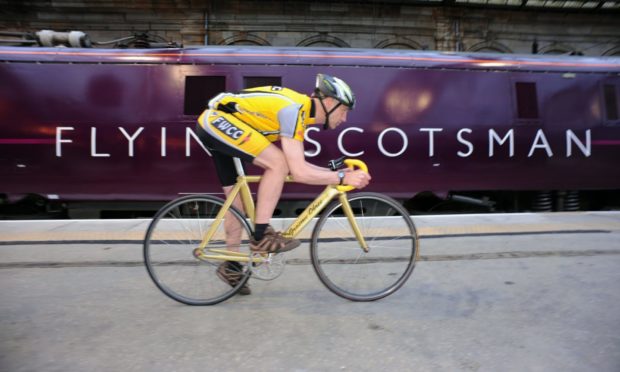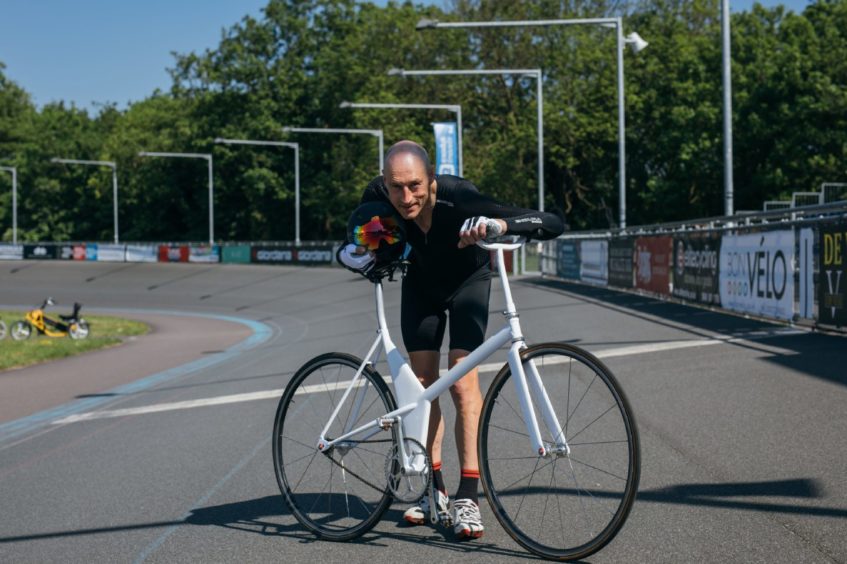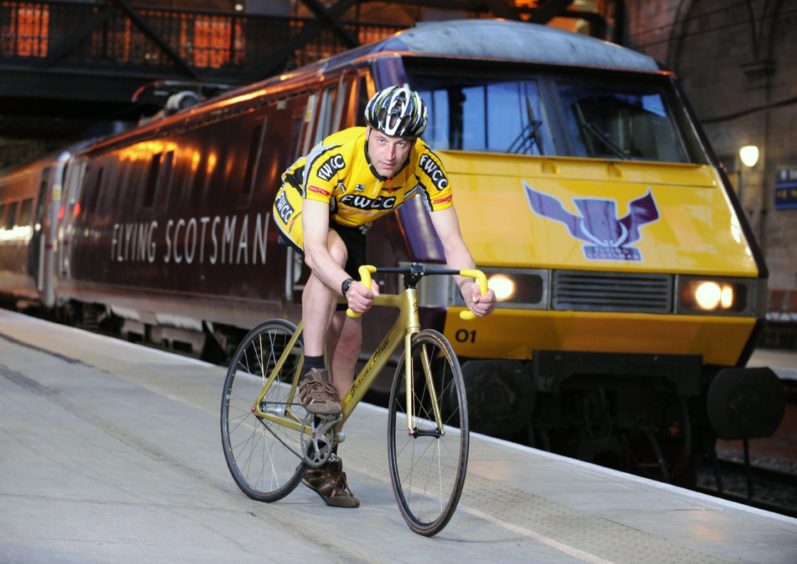Cycling’s popularity has become a global phenomenon in the 21st century and the streets of Aberdeen will be packed when the participants in the Tour of Britain arrive in the Granite City this weekend.
Indeed, we have grown accustomed to witnessing the exploits of myriad UK champions throughout the last two decades, including such figures as Chris Hoy, Bradley Wiggins, Victoria Pendleton, Laura Kenny and the north-east’s very own Neil Fachie.
But it wasn’t that long ago that the sport was dominated by Europeans and where perceived interlopers such as Scotland’s Graeme Obree were viewed with suspicion by the cognoscenti. It didn’t matter that he shattered global records and created history; he was an outsider, somebody whose achievements didn’t chime with orthodoxy.
Perhaps that was the consequence of his complex personality, his battle with mental health issues and refusal to bow to authority. But I’ve never forgotten how Obree burst into the international spotlight with a stunning story which was subsequently turned into a film, The Flying Scotsman, with Jonny Lee Miller in the lead role.
When we first met in 1993 and he talked 15 to the dozen, there was no hint of the fellow’s inner demons which were eventually laid bare when Obree tried to commit suicide on several occasions and revealed he had bipolar disorder.
This discovery was all the more shocking, because it was difficult to understate the entertainment value he provided, while constructing his own bikes, feasting on marmalade sandwiches and winning titles even as he enraged the cycling panjandrums.
Week after week in the early 90s, at time trials and pursuit competitions across the country, his name figured prominently in the results sections of newspapers.
It was in March that I decided to track down the man behind the multitude of small-type victories in the Sport in Brief columns and duly encountered that rarest of creatures; a fully fleshed-out free spirit without a trace of arrogance or egocentricity, who honestly believed he could emulate Jimmy Cagney and become king of the world.
During that first meeting, on a wintery Ayr afternoon, Obree was dynamism personified. He had built a bike – nicknamed Old Faithful – by ingeniously deploying £70 of scrap metal and a few parts from his wife’s washing machine.
And, as he told me: “I’m going for the world hour record and I think I can achieve it, because I have been paying my dues for years and I’m ready to make a bigger splash.”
His target was the Hamar velodrome in Norway in July, where he was aiming to surpass the existing mark established by the Italian maestro, Francesco Moser. And although it sounded implausible, he proved as good as his word, his coruscating 51.596km ride at the second attempt instantly propelling him to international stardom.
It was as if I came out of Brigadoon
Suddenly, he was no longer touring Ayrshire, but amassing a fan base from Athens to Anchorage. Crouched low, with his chest on the handlebars, his elbows tucked underneath and his knees nearly reaching his chin, his style was more reminiscent of an Alpine skier than a pedalling maestro – but he was no Eddie Edwards.
He was a Scottish sportsman with his capacity for bringing raucous revelry to a normally monosyllabic milieu. Where his English rival Chris Boardman was all PR snooze-speak, Obree was blessed with charisma to burn.
“I’ll always cherish the look on the Norwegian crowd’s faces when they realised that I had beaten Moser’s record,” said Obree, speaking down a crackly phone line a few hours after that remarkable achievement.
“There was puzzlement, incredulity, amazement – it was all there, as if I was some daft Scottish loon who had ridden out of Brigadoon into the history books.
“My first run was on the Friday and I wasn’t feeling 100%, but I was determined to push myself to the limit, because I knew I had the required talent and resilience.
“Through the night, I was up every two hours drinking water and doing stretching exercises just to make sure I didn’t seize up. And, once I was 15 minutes into Saturday’s ride, I was flying. I was in great shape and feeling so good that I knew the prize was in my lap. It was incredibly exhilarating to have the power to make that happen.”
At that stage, his future prosperity looked guaranteed. He was voted BBC Sportscene’s Personality of the Year in 1993 and duly delivered a spontaneous thank-you speech which amply emphasised his wit and intelligence.
But his life in these days was a wafer-thin balancing act. There were professional disappointments, personal setbacks and a constant feeling he was standing on a ledge.
He said: “All the things I won weren’t out of a passion for winning; they were out of a terrible fear and obsession with losing. I kept worrying that if I stopped winning, I would be regarded as a failure, a flop and it soon became this incredible millstone.”
Tour of Britain set for launch as race director Mick Bennett looks forward to Aberdeen finale
Thankfully, Obree has survived his brushes with death and is now a motivational speaker who talks with genuine insight about mental health.
He may not have the riches or fame of some of those who followed in his slipstream, but he was a trailblazer whose prodigious feats inspired the likes of Hoy.
He deserves his place in the pantheon as the 2021 Tour heads towards Aberdeen.
The Tour of Britain will be televised on all eight days by ITV4 and updates will be posted on the Press and Journal and Evening Express websites.


